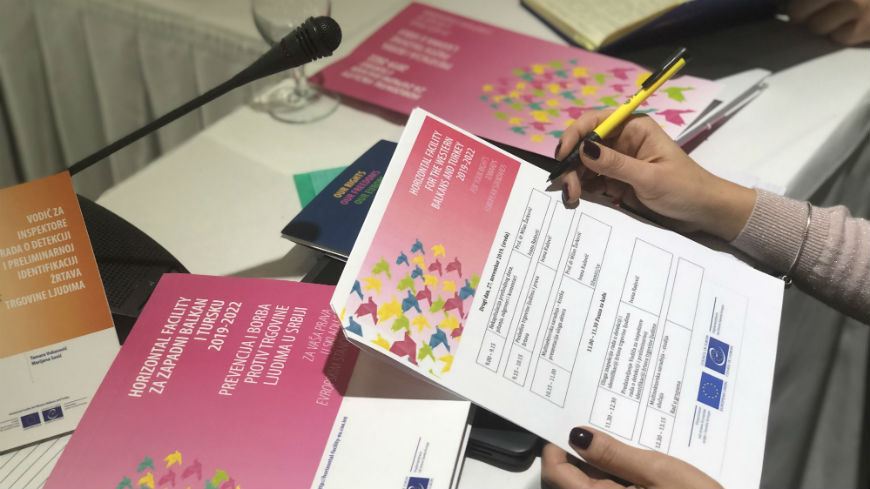“Labour inspectors are very important actors in preventing and combating trafficking in human beings for the purpose of labour exploitation”, said Aleksandra Ljubojevic, Director of the Centre for Human Trafficking Victims’ Protection, at the opening of the multidisciplinary Workshop held on 26-27 November 2019 in Sabac, Serbia.
In fact, statistics on trafficking in human beings (THB) show that THB for the purpose of labour exploitation is the prevalent form of human trafficking in Serbia (Group of Experts on Action against Trafficking in Human Beings - GRETA report on Serbia 2018[1]). Despite several victims’ identification mechanisms in place, the capacity of labour inspectors and their ability to detect cases of trafficking remains limited. There is still considerable confusion over the distinction between labour exploitation and sub-standard working conditions, as well as related concepts such as trafficking in human beings, debt bondage, or slavery-like practices.
To improve the knowledge and skills of labour inspectors to recognize signs of trafficking for the purpose of labour exploitation, the workshop in Sabac was organised, building on a comprehensive and collaborative approach between labour inspectors, representatives of the Centre for Human Trafficking Victims’ Protection, the police, the National Anti-Trafficking Coordination Office, CSOs and trade unions. This approach, often referred to as “cross-system” or “multidisciplinary,” requires co-operative work by relevant agencies and experts to identify victims and to refer them to assistance and protection. The workshop included discussions on the European framework for Action against trafficking in human beings, key legal concepts, forms of human trafficking for labour exploitation and criminal process as well as operational indicators and guidance for labour inspectors.
Good practice examples from Belgium, presented by Mr Van Hauwermeiren from the Belgian Social Inspectorate, highlighted the importance of using indicators to identify THB for labour exploitation during regular inspections. These indicators provide key red flags that could alert labour inspectors about a potential trafficking situation that should be reported, including unacceptable working conditions, or high-level dependence from an employer.
The Action “Preventing and combating trafficking in human beings in Serbia” is a part of the “Horizontal Facility for the Western Balkans and Turkey II”, a co-operation initiative co-funded by the European Union and the Council of Europe and implemented by the Council of Europe, which aims at assisting beneficiaries in South-East Europe to comply with the Council of Europe standards and European Union acquis in the framework of the enlargement process, where relevant.
[1] Report concerning the implementation of the Council of Europe Convention on Action against Trafficking in Human Beings by Serbia

